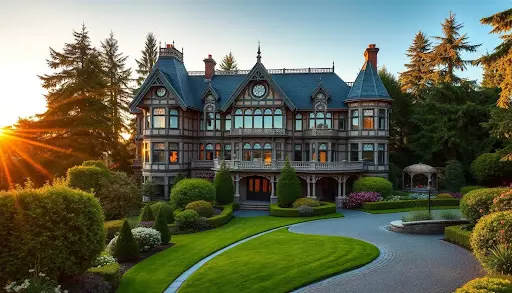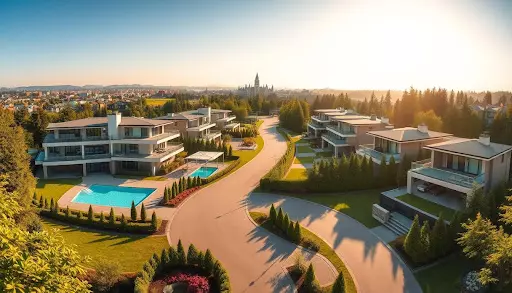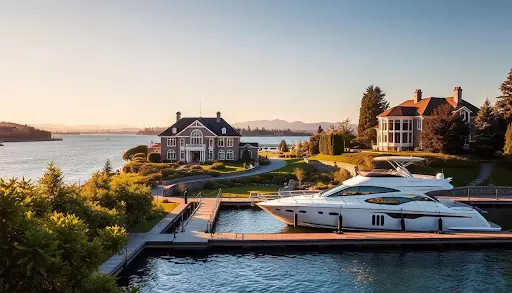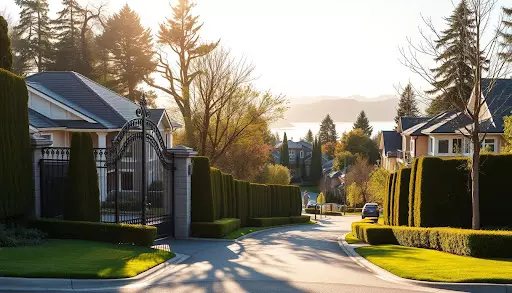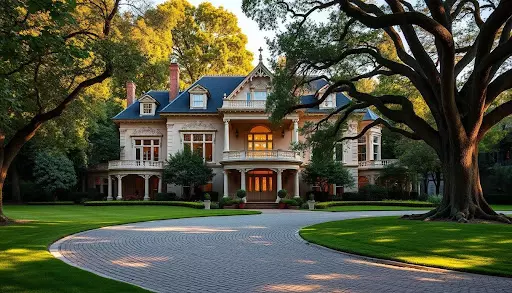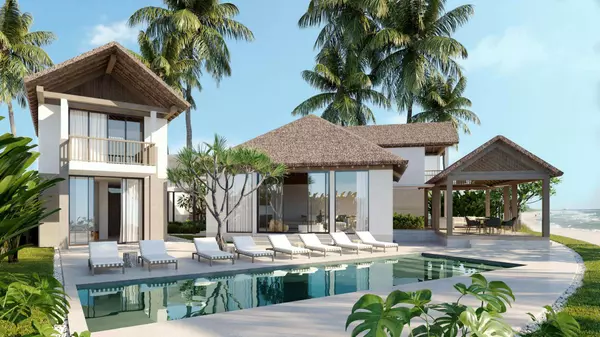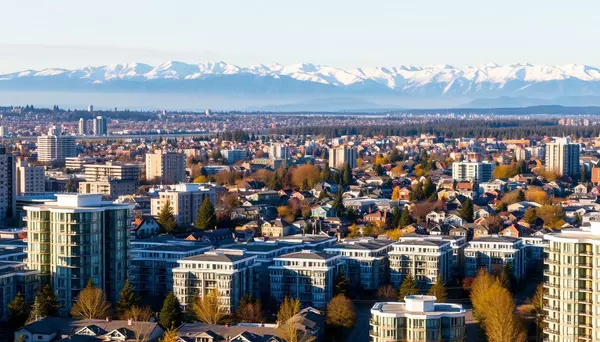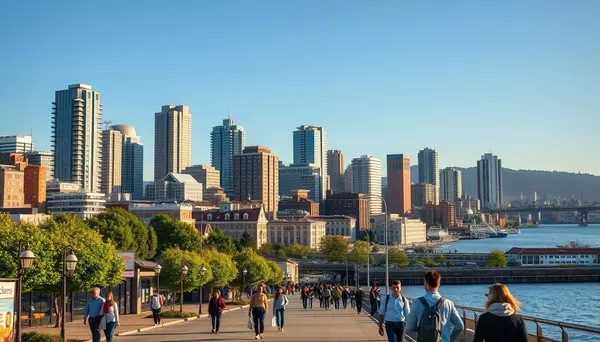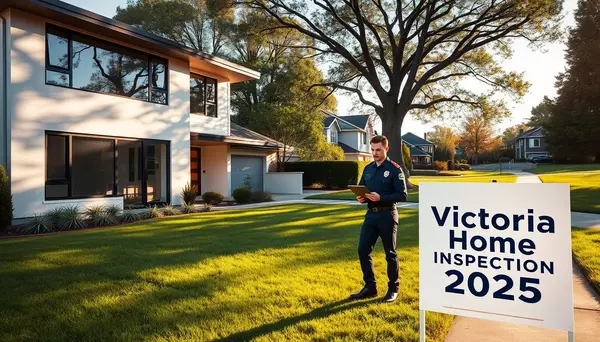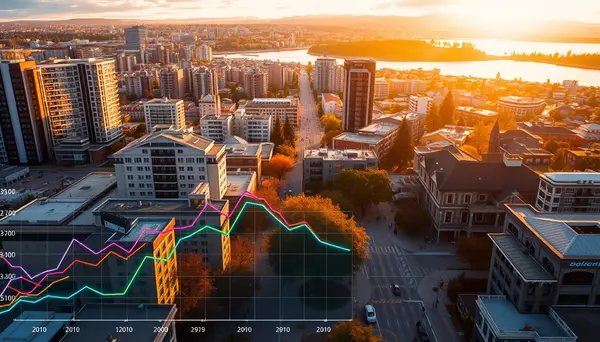Unique Architectural Styles in Victoria Versus Other Australian Cities' Homes

When considering unique architectural styles in Victoria, many people may not realize how distinct these homes are compared to those in other Australian cities. This exploration will compare the various architectural styles found in Victoria, highlight key features of homes currently for sale, and examine market trends influencing local designs. By understanding these aspects, readers can make more informed decisions when evaluating homes. This content will shed light on architectural differences, helping potential buyers find the ideal property that meets their style preferences and investment goals.
Understanding Architectural Styles in Victoria
Victoria is home to distinct architectural styles shaped by unique historical influences. This section will outline the defining characteristics of these styles, the impact of local history, and the common materials and techniques employed in Victorian homes, as well as home evaluation practices. Additionally, it will address how modern concerns like sustainability, climate change, and public transport intertwine with architectural practices that respect the natural ecosystem while considering supply chain factors.
Defining Architectural Styles Unique to Victoria
The architectural styles in Victoria are shaped by the region's unique historical context and environmental considerations. Notable styles include the Victorian, Edwardian, and Mid-Century Modern, each reflecting the area's diverse cultural influences and adaptation to local soil conditions. As cities evolve, modern architects are increasingly integrating sustainable energy solutions and materials that minimize carbon footprint and reduce pollution, promoting sustainable development that harmonizes with Victoria’s natural landscape.
Historical Influences on Victorian Architecture
The historical influences on Victorian architecture are deeply rooted in the region's cultural evolution and responses to environmental conditions. Aspects from Tasmania's architecture can be seen in the use of local materials, which creates a unique charm in townhouses designed for Victoria's climate. Moreover, research into water resources management has led to construction practices that focus on sustainability, ensuring that homes are not only aesthetically pleasing but also environmentally responsible, setting them apart from typical designs found in other Australian cities.
Common Materials and Techniques Used in Victorian Homes
Victorian homes are characterized by the use of local materials such as brick, timber, and stone, which contribute to their unique aesthetic and adaptability to the region's climate. The demand for such materials has influenced construction techniques that prioritize durability and environmental suitability, particularly in flood-prone areas. Compared to homes in cities like Canberra or suburbs across Australia, the architectural integrity of Victorian residences reflects a thoughtful integration of historical craftsmanship with contemporary sustainability practices.
Comparison of Architectural Styles Across Australian Cities
Architectural trends across Australian cities showcase a rich diversity influenced by local conditions and practices. In Sydney, popular designs often focus on energy efficiency and integration with urban landscapes. Melbourne's distinctive housing features emphasize a balance between heritage and contemporary styling, reflecting agriculture and environmental policy advancements. In Brisbane and Adelaide, characteristics highlight approaches to sustainable cities aimed at achieving net zero emissions while respecting regional contexts.
Overview of Popular Architectural Trends in Sydney
In Sydney, architectural trends increasingly reflect the city's commitment to urban planning that prioritizes sustainability and environmental responsibility. Many structures integrate green rooftops and energy-efficient designs, significantly reducing greenhouse gas emissions and contributing to the green economy. This approach aligns with global practices observed in cities like New York City, where innovative building strategies and smart technology enhance urban life while respecting ecological balance.
Distinctive Housing Features in Melbourne Versus Other Regions
Melbourne's housing features distinct characteristics that cater to higher population density compared to other Australian cities. The emphasis on compact living spaces not only maximizes the use of limited resources but also supports urban food security through local farming initiatives. By implementing innovative designs that reduce greenhouse gas emissions and carbon dioxide output, Melbourne showcases an architectural approach that balances aesthetic appeal with environmental responsibility, making it a model for sustainable living in urban areas.
Characteristics of Architecture in Brisbane and Adelaide
Brisbane and Adelaide showcase distinctive architectural characteristics that reflect their commitment to affordable housing and sustainability. In Brisbane, innovation in design prioritizes natural ventilation and flood-resistant structures, addressing challenges posed by climate and air pollution. Meanwhile, Adelaide's architecture focuses on maintaining community aesthetics while promoting energy efficiency, embracing practices that align with the broader goals outlined in New South Wales urban planning, as seen in Melbourne's central business district. Together, these cities exemplify a progressive approach to housing that balances functionality, environmental consciousness, and urban livability.
Key Features of Homes for Sale in Victoria
The architectural elements that define Victorian homes contribute significantly to their unique charm and character. These residences typically feature varied layouts and designs, with an emphasis on functionality and beauty. Additionally, landscaping and outdoor features, carefully integrated with transportation options and local wind patterns, enhance the living experience, creating a habitat that reflects the statistics of the region's climate and community preferences.
Architectural Elements That Define Victorian Homes
Architectural elements that define Victorian homes in Victoria include intricate woodwork, expansive verandas, and decorative features that reflect local craftsmanship. These homes often integrate materials suited to the region’s climate, promoting durability while enhancing aesthetic appeal. As the demand for unique Victorian properties continues to rise, understanding the features that contribute to their price can guide potential buyers in making informed decisions about their investments in real estate.
Typical Layouts and Designs of Victorian Houses
Victorian houses typically showcase distinct layouts that reflect both elegance and practicality. Commonly, these homes feature high ceilings, large rooms, and an emphasis on communal areas, fostering a warm atmosphere for family gatherings. The designs often include separate dining and living spaces, highlighting a clear division between public and private areas, which appeals to both home buyers and investors looking for charming residences that embody Victoria's architectural heritage.
Landscaping and Outdoor Features Unique to Victorian Properties
The landscaping and outdoor features of Victorian properties often play a significant role in their appeal, characterized by well-maintained gardens that enhance the overall aesthetic of the home. Traditional elements, such as ornate fences, lush greenery, and colorful flower beds, create inviting spaces that reflect the region's natural beauty and climate. Home buyers appreciate these features, as they not only add charm but also foster a connection with the outdoors, offering a serene environment unique to Victoria compared to homes in other Australian cities.
Market Trends Influencing Architecture in Victoria
The architectural landscape in Victoria is influenced by several key market trends. The demand for heritage-listed properties highlights their significance and implications for real estate value. Modern developments often adapt traditional styles, integrating contemporary aesthetics with historical charm. Additionally, sustainability trends in architectural design emphasize eco-friendly materials and practices, ensuring new constructions respect the environment while maintaining Victoria's unique architectural identity.
Demand for Heritage-Listed Properties and Their Implications
The demand for heritage-listed properties in Victoria significantly influences the local real estate market, as these homes often exemplify unique architectural styles that reflect the region's history and culture. Buyers are increasingly drawn to the charm and character of heritage properties, understanding that such investments can provide long-term value and a connection to the past. However, potential owners must also navigate restrictions related to renovations and maintenance, ensuring their commitment to preserving the architectural integrity of these significant homes in contrast to more contemporary options available in other Australian cities.
Impact of Modern Developments on Traditional Styles
Modern developments in Victoria are increasingly focusing on integrating architectural styles with historical elements, particularly as new constructions aim to respect traditional designs. This blend of the old and the new allows for innovative housing solutions that meet contemporary needs while preserving the unique aesthetic of the region. Real estate buyers are often drawn to these harmonized designs, as they offer a sense of connection to the past while providing the functionality of modern living.
Sustainability Trends in Architectural Design
Sustainability trends in architectural design are increasingly shaping the character of homes in Victoria, reflecting a commitment to environmental responsibility and energy efficiency. Architects often incorporate features such as solar panels, rainwater harvesting systems, and sustainable materials, which reduce the ecological footprint of new constructions. This trend not only aligns with the preferences of modern home buyers but also enhances the long-term value of properties within Victoria, differentiating them from styles in other Australian cities.
Regional Architectural Differences in Australia
Regional characteristics in housing styles across Australia reveal significant differences influenced by geography and culture. Each city's unique environment impacts architectural design, leading to variations in aesthetics and functionality. Cultural factors further shape these choices, resulting in distinct styles that reflect local heritage and modern needs. The following sections will explore these influences in detail.
Identifying Regional Characteristics in Housing Styles
Identifying regional characteristics in housing styles reveals how geography and cultural heritage shape architectural identity across Australia. For instance, Victorian homes showcase intricate woodwork and expansive verandas, representing the region's historical influences and climate adaptability. In contrast, homes in Brisbane often emphasize natural ventilation and flood resilience, reflecting the subtropical environment and addressing specific climate challenges, which distinguish their architectural approaches from those in Victoria.
How Geography Shapes Architectural Design Across Cities
Geography plays a critical role in shaping architectural design across different cities in Australia, influencing both aesthetics and functionality. For instance, in coastal regions like Victoria, homes often feature large verandas and expansive windows that maximize natural light and promote airflow to combat humidity. In contrast, cities such as Brisbane prioritize flood-resistant designs that incorporate elevated structures and ventilation systems to address their specific climatic challenges, showcasing how each city adapts its architecture to meet environmental demands while reflecting local heritage.
Cultural Factors Influencing Architectural Choices
Cultural factors significantly influence architectural choices across Australia, shaping the design and construction of homes in various cities. For instance, in Victoria, the architectural heritage reflects British influences and local traditions, resulting in distinctive Victorian and Edwardian homes that highlight craftsmanship and unique aesthetics. In contrast, cities like Brisbane emphasize designs that address the tropical climate, integrating elements that promote airflow and resilience against natural elements, showcasing how local culture and environment drive distinct architectural styles across the nation.
Future of Architectural Styles in Victoria and Beyond
The future of architectural styles in Victoria and beyond is set to evolve in response to emerging trends in home design and architecture. Innovations in technology will play a critical role in shaping developments, influencing everything from materials to construction techniques. Predictions suggest a significant shift toward aesthetics that blend modern functionality with sustainable practices, providing valuable insights for home buyers and investors.
Emerging Trends in Home Design and Architecture
Emerging trends in home design and architecture in Victoria highlight a growing emphasis on integrating eco-friendly elements with modern aesthetics. Architects and builders are increasingly incorporating sustainable practices, such as the use of reclaimed materials and advanced energy-efficient technologies, which resonate well with environmentally conscious home buyers. As cities across Australia adapt to climate challenges, these trends ensure that Victoria's architectural landscape maintains its distinctive character while appealing to current market demands for functionality and sustainability.
Influence of Technology on Future Developments
The influence of technology on future developments in Victoria's architectural landscape is becoming increasingly pronounced, shaping both design and construction processes. Innovations such as 3D printing and augmented reality enable architects to create more sustainable and efficient homes that align with modern needs. Moreover, smart home technologies are being integrated into new builds, offering enhanced energy management and improved living experiences, which address the growing demand for environmentally responsible housing options in Victoria compared to other Australian cities.
Predictions for the Evolution of Architectural Aesthetics
The evolution of architectural aesthetics in Victoria is expected to emphasize a harmonious blend of historic charm and contemporary design, influenced by sustainability and innovative technology. As home buyers increasingly value eco-friendly features, architects are likely to incorporate green materials and energy-efficient systems that resonate with modern sensibilities. This shift will not only preserve the unique architectural styles of the region but also afford new constructions a sense of identity aligned with ecological responsibility, setting a standard that may inspire other Australian cities to adapt similar approaches.
Conclusion
Unique architectural styles in Victoria reflect a rich historical context and a commitment to sustainability, distinguishing them from homes in other Australian cities. The integration of local materials and traditional craftsmanship enhances the appeal and durability of Victorian residences. Understanding these styles not only enriches appreciation for the region's heritage but also informs potential buyers about the value of heritage-listed properties. This awareness empowers home buyers and investors to make informed decisions while fostering a deeper connection to Victoria's architectural identity.
Categories
Recent Posts
